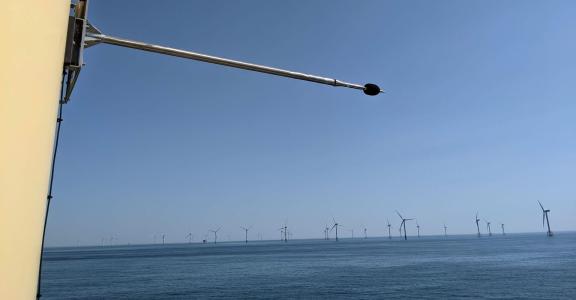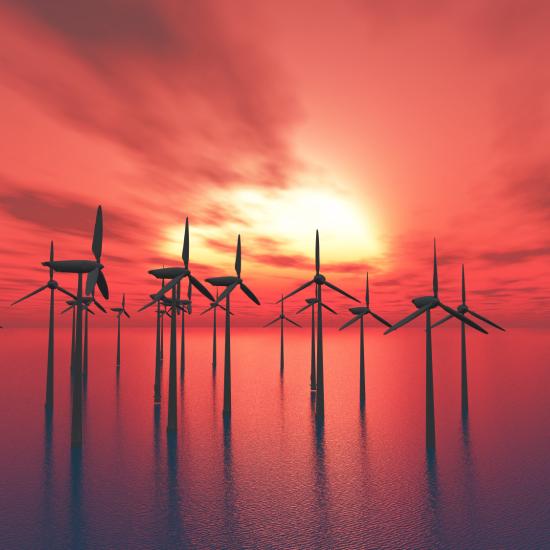In offshore wind farms blade damage caused by erosion is a frequent cause for blade failure and power loss. To offer a durable solution, Sirris has developed a methodology, based on the detection of changes in the aeroacoustics response of the wind turbine blades due to erosion. This system is currently operational on one of the wind turbines in Rentel, one of Otary's offshore wind farms.
Otary is a wind farm operator who owns several offshore wind farms in the Belgian North Sea: Rentel and SeaMade, which consists of the Seastar and Mermaid wind farms. Together, these wind farms have 100 wind turbines and are responsible for 796 MW of offshore wind power in total.
Blade damage, which leads to edge erosion especially, is one of the most frequent reasons for blade failure in offshore wind farms. Repairs are difficult as they are normally done between the months of March and September, when the temperatures are above 15 °C. When not repaired, blade damage may cause up to 5% power reductions and blade failures. Wind farm developers need independent monitoring methods that are cheap, durable and preferably installed on a position that will not influence or interface with the existing systems or operations of the wind turbines.
Microphone collecting data
To respond to Otary's need, Sirris came up with a methodology which is based on detecting the changes in the aeroacoustics response of the wind turbine blades due to erosion. This system, which consist of a microphone designed for operating in harsh conditions with an independent data acquisition system (provided by 24Sea), is currently operational on one of the wind turbines in the Rentel offshore wind farm. Data is being analysed and models are being developed to capture the relevant signals in this challenging operational environment.
To the benefit of all
The results are expected at the end of 2023, after an experimental campaign, called the “artificial leading edge erosion experiment”, which will be conducted in the summer of 2023. If successful, this method has a potential of being implemented in all wind turbines, not only Otary's, but also at other onshore and offshore wind farms, since it would work as an early warning system indicating blade damages, which otherwise could only be detected during drone inspections once a year.
The campaign is being carried out in the context of the Rainbow project.
|





